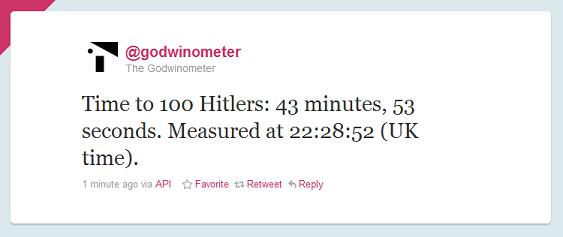Interesting now
735 words | ~4 min
Noah Brier's post on Managing Flow (the more dynamic, less permanent side of content management) got me thinking about what content (or flow) prioritization should look like now. The quoted section from Danah Boyd in particular sparked a thought:
This is not simply about aggregating or curating content to create personalized destination sites. Frankly, I don't think this will work. Instead, the tools that consumers need are those that allow them to get in flow, that allow them to live inside information structures wherever they are and whatever they're doing.
The thought also spun off from something a couple of days back, when I was thinking about Twitter lists. It struck me that lists are a curiously old-fashioned response to the problem of too much information. Lists always have been a valuable aid to recall or retrieval, from the times tables (learned as poetry, not maths) to the ship role-calls in the Iliad to dictionaries to library catalogues to the patent archives in the British Library to site maps (for more on lists, see Umberto Eco's The Infinity of Lists). But they're always head-dependent, whether by letter or number or subject or something else, which makes them neat but less optimal than search paradigms (strings, regular expressions, and so on).
Lists let you run; search lets you teleport. Lexicography got a lot easier when regex queries came along, just like site maps became less necessary after inurl: searching. There are downsides to teleporting, of course, especially loss of serendipity. A former tutor of mine used to say that one of the best things about the open stacks in Cambridge University Library was finding books you never knew existed, next to the ones you were looking for. When you're in a hurry, though, it's hard to dispute the usefulness of search, barring those increasing occasions where sheer volume of results means you need a guide who knows the terrain. (That's what makes good editors good.)
Twitter lists, like all lists, depend on a theory of the useful organizability of the world. (That's even true of alphabetical lists, if you think about it. It's what makes encyclopedias so weird: an organization of things in the world as if they were words or books.) The big problem is that it relies upon the consistency of that theory. The way you organize information today has to be equally meaningful to you tomorrow.
Fine if you're a medieval librarian, and you and all your books can reasonably be expected to remain in one place. Less fine if you're using Twitter on a mobile device.
Mobile devices fit in with your life pretty well, so there's no expectation that you will be in the same place or state of mind each time you use one. That means lists don't do a great job, because your theory of useful organization will keep changing.
But search doesn't do a great job either, because so much of the fun of Twitter is that library-stack feeling of discovery.
By combining list-making and the pattern-spotting ability that makes search work, though, we might just get there. What if your Twitter client had two little buttons (or some better-designed equivalent) next to each Tweet: More Interesting Now, and Less Interesting Now? Using something like the heuristic methods used to filter spam, couldn't you make a deliberately temporary organization for your tweets based on your current theory of interestingness, that would be cleared each time? Fixed lists could still be used as training wheels - for example, if you had four Twitter lists containing people you know, people you don't know, company feeds and news feeds, and you ranked a tweet from a person you know as More Interesting Now, a company feed as Less Interesting Now, that one action could cause other similar items (i.e. those in the same list) to follow suit. More interesting items could move up the list of tweets you see (Digg-style), or become more colourful, or bigger, or whatever.
Unlike spam heuristics, or lists, it's deliberately impermanent. Unlike search, it retains serendipity.
I have no idea how you'd build it, or indeed if anyone has. Just a thought, though.
# Alex Steer (08/11/2010)
